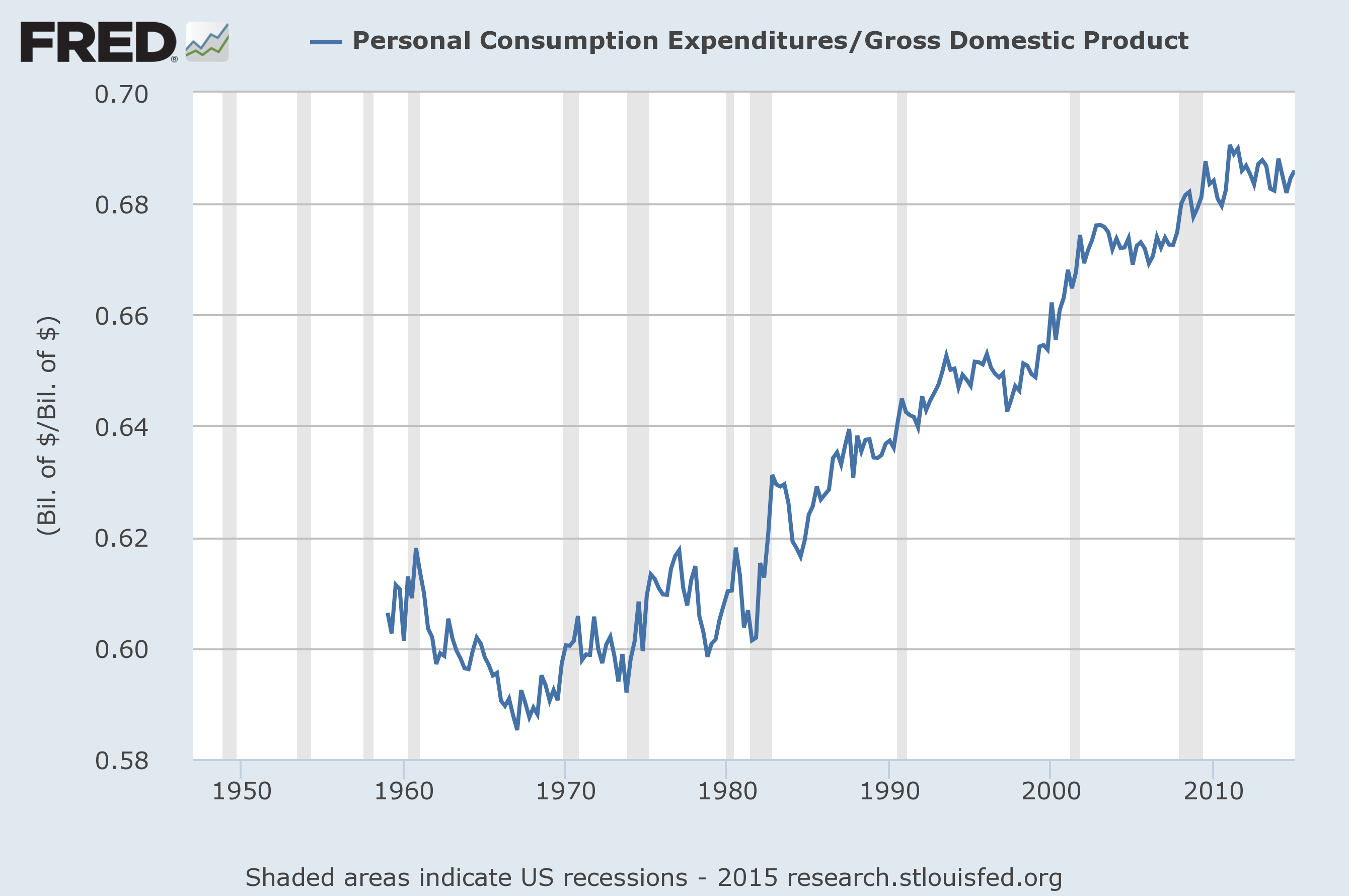December 14, 2015
Robert Samuelson again gives us his data free explanation for the weak recovery in his Monday column. He contrasts the current weak recovery with the strong recovery of the eighties. He notes the Fed’s efforts to boost the economy in both periods, then tells readers:
“In the 1980s and ’90s, consumers and businesses were eager to spend. The Fed accommodated that demand but did not create it. By contrast, consumers and businesses now are conditioned to be wary. Having lived through events — the financial panic and crushing recession — that supposedly could not happen, they are reluctant spenders. The Fed can try to ease their caution but cannot systematically eliminate it.”
The problem with this story is that consumers are spending and businesses are investing. Consumption is at a near record high as a share of GDP. It is only slightly below the peak reached in the housing bubble.

Non-residential investment as a share of GDP is somewhat below the peaks of the tech bubble in the late 1990s, but is higher than during the eighties boom. The explanation for the weaker recovery is that there was an enormous excess supply of housing coming out of the bubble. This kept construction rates very low ever since the collapse of the bubble. By contrast, the Volcker recession led to a plunge in housing construction, which created a huge amount of pent-up demand for when the Fed lowered interest rates. (The trade deficit, at 3.0 percent of GDP or $500 billion annually, also creates a huge hole in demand that is not easily filled.)
The other major difference between the current recovery and the 1980s was that the structural budget deficit was expanding rapidly in that recovery. In the current recovery it has been contracting rapidly.
In short, there is a very simple story as to why this recovery has been weak and has nothing to do with the factors that Samuelson keeps highlighting.







Comments